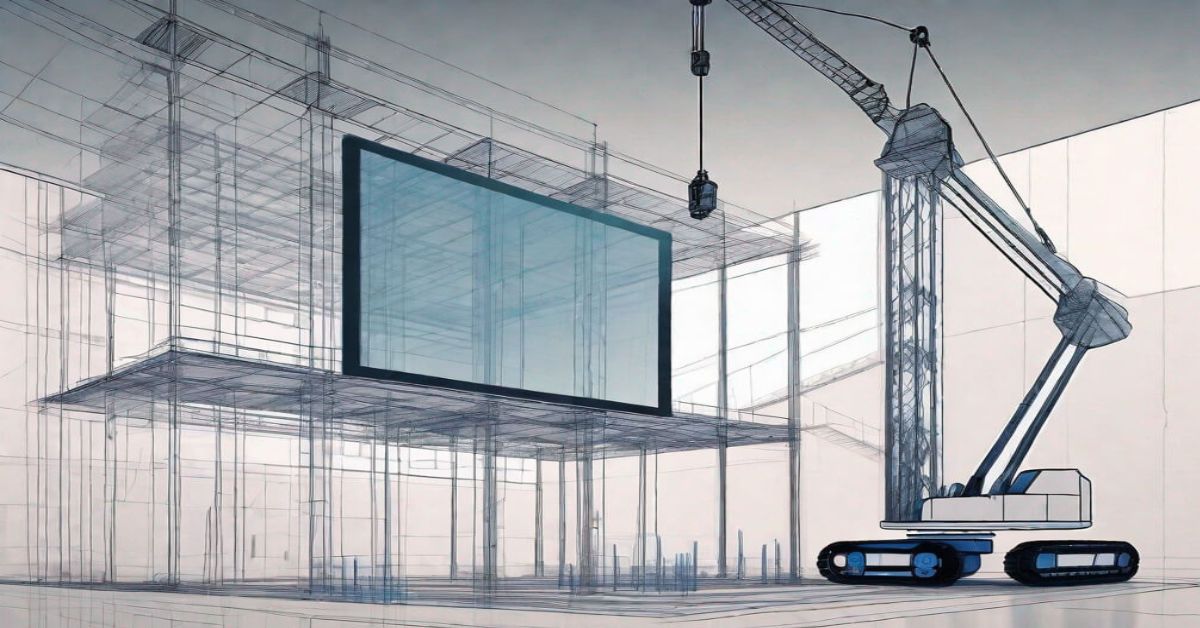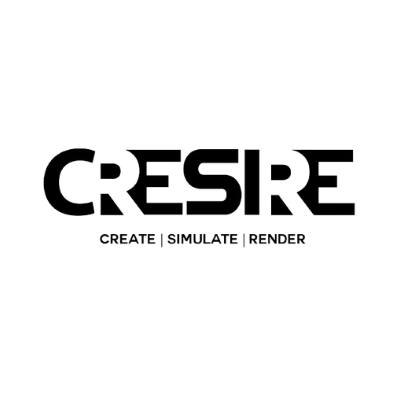The Power of Scan to BIM Modeling

The Power of Scan to BIM Modeling: Revolutionizing Construction Processes
In today's rapidly evolving construction industry, integrating advanced technologies has become crucial for maximizing efficiency and reducing errors. One such technology that has gained significant prominence is Scan to BIM Modeling. This revolutionary approach could transform construction processes and reshape project plans and execution.
Understanding Scan to BIM Modeling
Before delving into the benefits and prospects of Scan to BIM Modeling, it is essential to understand the concept behind it. Scan to BIM converts laser scan data into a Building Information Modeling (BIM) format. Laser scanners capture accurate measurements and detailed 3D point clouds of existing structures or sites, which are then transformed into intelligent BIM models.
By leveraging advanced scanning techniques and software, construction professionals can create precise virtual representations of real-world structures, enabling them to make informed decisions throughout the project lifecycle.
Defining Scan to BIM
Scan to BIM is the reverse engineering of a physical space or structure. It involves capturing geometrical and visual data through laser scanning or photogrammetry techniques and then converting it into a digital model. This model can be used for various purposes, including design visualization, clash detection, quantity takeoff, and construction coordination.
Imagine an architect being tasked with renovating an old historical building. By utilizing Scan to BIM technology, the architect can capture the intricate details of the building's facade, including ornate carvings and delicate mouldings, with utmost precision. This level of accuracy allows the architect to create a virtual replica of the building, ensuring that the renovation plans align seamlessly with the existing structure.
Furthermore, Scan to BIM can also be employed in preserving and restoring heritage sites. By capturing the exact measurements and conditions of historical landmarks, conservationists can develop comprehensive strategies to conserve these structures for future generations.
The Technology Behind Scan to BIM
The heart of Scan to BIM lies in its technological foundations. Laser scanners with advanced sensors capture millions of data points in seconds, creating highly detailed point clouds. These point clouds are then processed using specialized software that generates accurate and information-rich BIM models.
But how does this technology work? Laser scanners emit laser beams that bounce off surfaces and return to the scanner, measuring the time it takes for the beam to travel. By calculating the distance based on the speed of light, the scanner can determine the precise location of each point in the scanned environment.
Moreover, integrating machine learning algorithms in the software allows for the automated extraction of different elements within the point cloud, such as walls, beams, and pipes, further streamlining the modeling process. This automation not only saves time but also reduces the chances of human error, ensuring the accuracy and reliability of the final BIM model.
With the continuous advancements in laser scanning technology and software development, Scan to BIM is becoming an indispensable tool in the construction industry. It empowers professionals to visualize, analyze, and collaborate on projects with unprecedented accuracy and efficiency, ultimately improving project outcomes and client satisfaction.
The Role of Scan to BIM in Construction
Scan to BIM modeling brings many advantages to the construction industry, revolutionizing how projects are executed and managed. Let's explore some critical roles played by Scan to BIM.
Improving Design Accuracy
One of the biggest challenges in construction projects is dealing with existing structures that need more accurate documentation. Traditional measurement techniques often lead to errors and inaccuracies, resulting in costly rework. Scan to BIM eliminates this uncertainty by capturing precise measurements and transforming them into virtual models. Designers and engineers can then work with accurate data, reducing clashes and ensuring seamless integration of new elements within the existing structures.
With Scan to BIM, the level of design accuracy is significantly enhanced. The detailed virtual models created through laser scanning technology accurately represent the existing structures. This allows designers to make informed decisions and modifications based on real-world conditions, minimizing the risk of errors and conflicts during construction.
Moreover, Scan to BIM enables designers to analyze the structural integrity of existing buildings. By comparing the virtual models with the original design specifications, potential structural issues can be identified and addressed early, preventing costly and time-consuming problems later in the construction phase.
Enhancing Collaboration and Communication
Effective communication and collaboration among stakeholders are vital for the success of any construction project. Scan to BIM models are a common platform that enables architects, engineers, contractors, and other project participants to visualize and share information. This collaborative environment fosters better coordination, minimizes misunderstandings, and ensures timely decision-making, enhancing project outcomes.
Project teams can easily access and share the virtual models by utilising Scan to BIM, facilitating effective communication and collaboration. This eliminates the need for lengthy and complex explanations, as stakeholders can visually understand the project's progress and requirements.
Architects can showcase their design intent, engineers can analyze structural elements, and contractors can plan construction sequencing, all within the virtual environment provided by Scan to BIM.
Furthermore, the collaborative nature of Scan to BIM allows for real-time updates and modifications to the virtual models. As changes occur during construction, the models can be easily updated and shared with the relevant stakeholders. This ensures that everyone is working with the most up-to-date information, reducing the chances of errors and conflicts arising from outdated documentation.
More: Top Point Cloud Modeling Services Providers in USA
The Benefits of Implementing Scan to BIM
Scan to BIM is a revolutionary technology that has transformed the construction industry. Combining laser scanning technology with Building Information Modeling (BIM) offers numerous benefits that enhance project efficiency, reduce risks, and improve overall construction outcomes.
1. Cost and Time Efficiency
One of the key advantages of implementing Scan to BIM modeling is its ability to significantly improve project efficiency by reducing both time and costs.
With accurate as-built models created through laser scanning, construction professionals can precisely understand the existing site conditions. This allows for more precise quantity takeoff and estimation, enabling accurate project costing. By clearly showing the project scope, contractors can avoid overestimating materials and labour costs, leading to cost savings.
Furthermore, the clash detection capabilities within the BIM environment help prevent conflicts during the construction phase. Identifying clashes between different building components or systems before construction begins can proactively address potential issues. This avoids costly rework and delays, as conflicts can be resolved in the virtual environment rather than on-site.
2. Risk Reduction in Construction
Construction projects inherently involve a certain level of risk. However, Scan to BIM modeling helps mitigate these risks by providing accurate information about site conditions.
By conducting laser scans of the site, project teams can capture precise measurements and details, ensuring that the as-built models accurately represent the physical space.
Identifying potential clashes or challenges beforehand allows project teams to develop proactive strategies. By addressing these issues in the virtual environment, construction professionals can reduce accidents and ensure a safer working environment. For example, by identifying clashes between structural elements and mechanical systems, necessary adjustments can be made to ensure structural integrity and avoid potential hazards.
Moreover, Scan to BIM modeling enables better coordination and communication among project stakeholders. Architects, engineers, and contractors can collaborate more effectively by having a comprehensive and accurate digital representation of the project. This leads to improved decision-making, reduced conflicts, and a smoother construction process.
Future of Construction with Scan to BIM
The future of construction undoubtedly lies in the broader adoption of Scan to BIM modeling. As the technology continues to evolve, we can expect further enhancements in scanning techniques, data processing algorithms, and seamless integration with other digital construction tools.
This will enable construction professionals to create more accurate and detailed 3D models of existing structures, improving construction projects' overall efficiency and quality.
One predicted trend in Scan to BIM is the development of more advanced and immersive capabilities. As the demand for sustainable construction practices grows, Scan to BIM will be crucial in analyzing and optimizing energy efficiency, material usage, and environmental impact. By integrating virtual reality and augmented reality technologies, construction teams can visualize and simulate the construction process, identifying potential issues and making informed decisions before starting the construction work.
Another trend that can be expected is the increased use of drones for scanning purposes. Drones equipped with LiDAR (Light Detection and Ranging) sensors can quickly capture accurate 3D data of large areas, making the scanning process faster and more cost-effective. This will enable construction professionals to conduct detailed site surveys and easily monitor construction progress.
Overcoming Challenges in Scan to BIM Adoption
Despite its numerous benefits, the widespread adoption of Scan to BIM faces some challenges. The cost of equipment and software, lack of skilled personnel, and resistance to change within the industry are a few factors that hinder its implementation. However, as awareness and understanding of the technology increase, these challenges can be overcome through strategic planning, investment, and training initiatives.
Investing in state-of-the-art scanning equipment and software may require a significant upfront cost, but the long-term benefits outweigh the initial investment.
By accurately capturing as-built data, construction professionals can reduce errors and rework, resulting in cost savings and improved project timelines. Additionally, training programs and certifications can help bridge the skills gap, ensuring that a sufficient number of qualified professionals can effectively utilize Scan to BIM technology.
Furthermore, overcoming resistance to change within the industry requires a shift in mindset. Construction professionals must understand that Scan to BIM is not a threat to their expertise but rather a tool that enhances their capabilities. By embracing this technology, they can streamline their workflows, improve collaboration with other stakeholders, and deliver projects more efficiently.
Conclusion
Scan to BIM modeling has the power to revolutionize construction processes. Its ability to capture accurate as-built data, improve design accuracy, enhance collaboration, and reduce risks has made it an invaluable tool for construction professionals.
As technology advances and adoption becomes more widespread, we can expect a future where Scan to BIM becomes the norm, reshaping the construction industry for the better.
Also Read, Process of 3D BIM Modeling in Design Development
Source: https://www.cresireconsulting.com/services/point-cloud-scan-to-bim-modeling-services/












